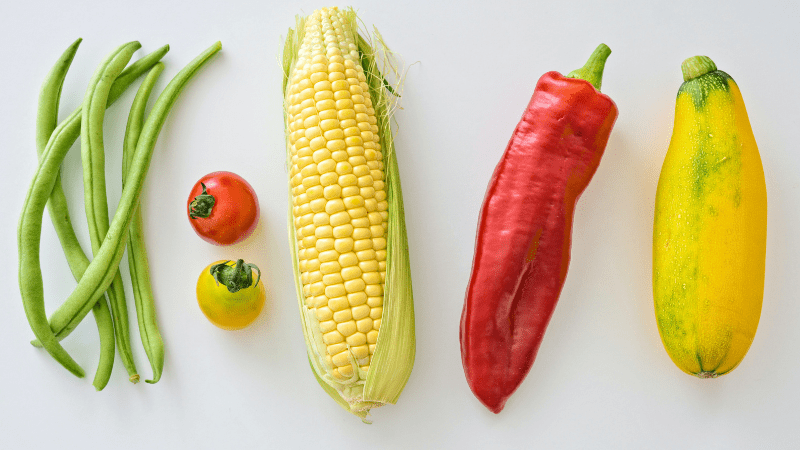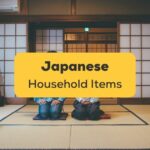If you learn the Thai language but have trouble making advanced or long sentences when speaking, you might miss the classifiers in your sentences.
There are many different types of words that make up a sentence and each plays a different role in creating meaning. Classifiers are no different. However, their role is not as easy to explain as verbs or nouns.
Today, we are going to look at some classifiers in Thai so that you will be one step closer to speaking fluently. Let’s get started!
What Is A Classifier?
Like all classifiers in general, the classifiers in the Thai language are used to classify a noun in terms of quantity or number. For some words, it is not possible to simply say a number and then the noun. Instead, you will need to put a classifier or counter word into the sentence.
The classifier usage is pretty common in Asian languages compared to European languages. In those languages, the classifiers are used when the noun counts, which appears with numerals. They can also be used when a noun is accompanied by a demonstrative adjective such as this or that. It is crucial to use the correct classifier in any sentence.
In English, for example, we would not just say ‘two shoes’. We would say ‘two pairs of shoes,’ where the word ‘pairs’ is acting as the classifier. Likewise, we wouldn’t say ‘two breads’, we would say ‘two loaves of bread.’ The word is placed in between the number and the noun. Other than these two, there are many different examples of these types of words.
As you can probably tell, explaining what they actually do is quite difficult and they could technically be avoided, but it would make you sound very odd and may also make you difficult to understand. While there are a lot, it should become more natural when you start putting them into use.
Classifiers In Thai
Classifiers are used to count nouns and objects in the Thai language. This subject is similar to the countable and uncountable nouns in English. For example, in English, we can’t say ‘I want two coffees,’ but instead, ‘I want two cups of coffee.’ Cup is a classifier in that sentence.
So, every noun in the Thai language is grammatically uncountable. Therefore you need to know the correct classifier word that is suitable for the specific noun. Here are the most common Thai classifiers:
- คน (khon) – Cardinal numbers – เพื่อนสองคน (phuen song khon) – Two friends
- ตัว (tua) – Indefiniteness – นกตัวหนึ่ง (nok tua nung) – A bird
- ลูก (luk) – Quantity – ทุเรียนหลายลูก (turian lai luk) – Many durians
- คันนี้ (khan) – Demonstratives – รถคันนี้ (rot khan ni) – This car
- หลัง (lang) – Quantifiers – บ้านทุกหลัง (ban tuk lang) – Every house
- คน (khon thi) – Ordinals – นักเรียนคนที่สอง (nakrian khon thi song) – The second student
- เล่ม (lem) – Adjectives – หนังสือเล่มใหม่ (nungsue lem mai) – The new book
Numeric Thai Classifiers (ลักษณะนาม)
Unlike English, there are no plural numerical classifiers, and there is no connection between noun classes and classifiers in the Thai language. The most important thing is that numeral classifiers always occur after nouns in a Thai sentence. This structure is used to show the amount or number of a noun. We explained the classifier usage below with basic examples for you!
Pattern: Noun + number + numerical classifiers
Example: หนังสือ 2 เล่ม (nǎng sǔue sǎawng lêm) – Two books.
The pattern below is a bit different, and it is used to indicate which noun you are talking about.
Note: นี้ (níi) means this, and นั้น (nán) means that.
Pattern: Noun + numerical classifier for book + นี้ (níi) / นั้น (nán)
Example: หนังสือ เล่ม นั้น (nǎng sʉ̌ʉ lêm nán) – That book.
Numeric Thai Classifiers For Living Things

คน (Khon)
This Thai classifier is used for humans.
Example: เธอเชิญแขกมากี่คน (thooe chooen khàaek maa gìi khon)
English: How many guests have you invited?
ตัว (Dtuua)
This classifier is used for animals.
Example: พ่อเลี้ยงสุนัขไว้ 2 ตัว (phâaw líiang sù nák wái sǎawng dtuua)
English: My father has two dogs.
รูป (Rûup)
This classifier is used only for monks.
Example: พระรูปนั้นสูงมาก (phrá rûup nán sǔung mâak)
English: That monk is very tall.
ดอก (Dàawk)
This classifier is used for flowers.
Example: ฉันชอบดอกไม้ดอกนั้นมาก (chǎn châawp dàawk mái dàawk nán mâak)
English: I like that flower a lot.
Numeric Thai Classifiers For Clothes

ตัว (Dtuua)
This classifier is used for most clothing items such as shirts, skirts, pants, shorts, and underwear.
Example: ฉันจะซื้อกางเกงตัวนั้น (chǎn jà súue gaang geeng dtuua nán)
English: I will buy that pair of pants.
เส้น (Sên)
This classifier is used for some accessories such as belts, necklaces, and bracelets.
Example: พ่อลืมเข็มขัดไว้ในรถ 1 เส้น (phâaw luuem khěm khàt wái nai rót nùeng sên)
English: Dad forgot one belt in the car.
Note: เส้น (sên) can also be used to describe objects flat objects.
คู่ (Khûu)
This classifier is used for pairs such as socks, shoes, and earrings.
Example: แม่อยากได้ต่างหูคู่นี้ (mâae yàak dâi dtàang hǔu khûu níi)
English: Mom wants this pair of earrings.
ผืน (Phǔuen)
This classifier is used for describing only scarves.
Example: ผ้าพันคอสีแดงผืนนั้นอยู่ที่ไหน (phâa phan khaaw sǐi daaeng phǔuen nán yùu thîi nǎi)
English: Where is that red scarf?
วง (Wong)
This classifier is only used for describing rings.
Example: แม่มีแหวนหลายวง (Mâae mii whǎaen lǎai wong)
English: Mom has many rings.
Numeric Thai Classifiers For Objects In The House

หลัง (Lǎng)
This classifier is used for buildings and houses.
Example: ฉันมีบ้าน 2 หลัง (chǎn mii bâan sǎawng lǎng)
English: I have two houses.
ห้อง (Hâawng)
This classifier is used for describing rooms.
Example: บ้านหลังนี้มีกี่ห้อง (bâan lǎng níi mii gìi hâawng)
English: How many rooms are there in this house?
เครื่อง (Khrûueng)
This classifier is used for electronic devices.
Example: บ้านฉันมีโทรทัศน์ 5 เครื่อง (bâan chǎn mii thoo rá thát hâa khrûueng)
English: There are five televisions in my house.
ตัว (Dtuua)
This classifier is used for furniture made from wood, such as desks, tables, and chairs.
Example: ในห้องนั่งเล่นมีเก้าอี้ 4 ตัว (nai hâawng nâng lên mii gâo îi sìi dtuua)
English: There are four chairs in the living room.
ใบ (Bai)
This classifier is used for kitchen glassware such as plates, bowls, cups, glasses, and pots.
Example: เอาจาน 4 ใบวางไว้บนโต๊ะ (ao jaan sìi bai waang wái bon dtó)
English: There are four plates on the table.
Numeral Thai Classifiers For Stationery Items

เล่ม (Lêm)
This classifier is used for describing books.
Example: หนังสือเล่มนั้นดีมาก (nǎng sǔue lêm nán dii mâak)
English: That book is very good.
แท่ง (Thâaeng)
This classifier is used for pencils.
Example: ฉันทำดินสอหักไป 5 แท่ง (chǎn tham din sǎaw hàk bpai hâa thâaeng)
English: I broke five pencils.
Numeral Thai Classifiers For Food

หัว (Hǔua)
This classifier is used for describing root vegetables.
Example: แม่เพิ่งซื้อแครอทมา 3 หัว (mâae phôoeng súue khaae ràawt maa sǎam hǔua)
English: Mom just bought three carrots.
ต้น (Dtôn)
This classifier is used for leaf vegetables.
Example: คะน้าต้นนั้นสดมาก (khá náa dtôn nán sòt mâak)
English: That Chinese broccoli is very fresh.
ลูก (Lûuk)
This classifier is used for fruits.
Example: ส้มลูกนี้อร่อยดี (sôm lûuk níi à ràauy dii)
English: This orange is delicious.
Do You Want To Learn Thai?

If you are looking for an excellent online resource to learn the Thai language, the Ling App is just for you!
The Ling App by Simya Solutions is a language learning app that has been featured by many platforms today. More than 60 languages are waiting for you in the app. Many users like Ling App because of its game approach and practical language lessons for everyone. You can master your foreign language from many aspects by spending only 15 minutes on Ling App daily.
So what are you waiting for to learn Thai now? Get it from the App Store or Play Store for free! Also, please do check out other related posts in the Thai language like how to count, conjunctions, and many more!





































































One Response
Hi Betül
I would like to kindly ask you for permission to use your Image “Classifiers in Thai” for non profit use. I’m visiting a thai course and created a learning game on learningapps.org. I attached the link to the message. You can try game nr.1 😉
Thanks for a short answer via mail. The games – and so your picture – aren’t published yet.
Kind regards
Marius